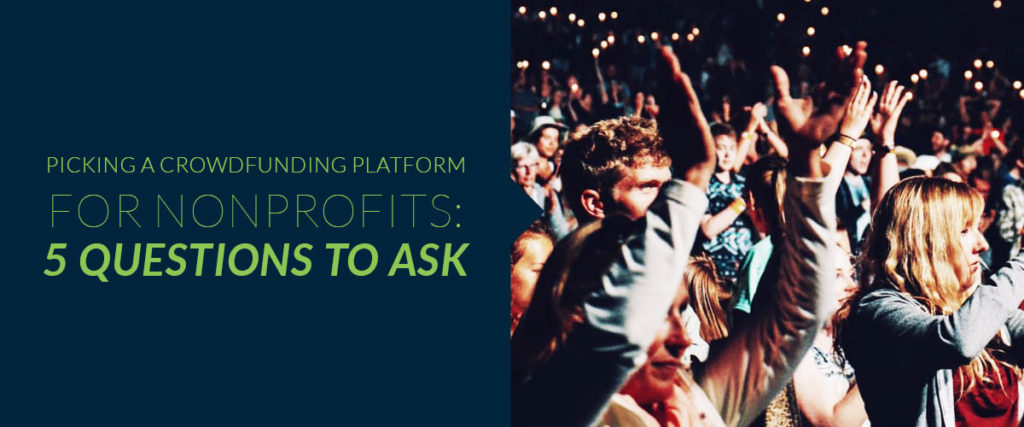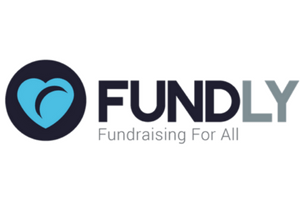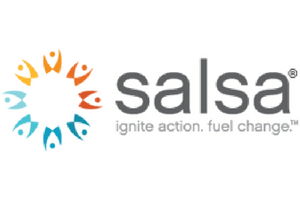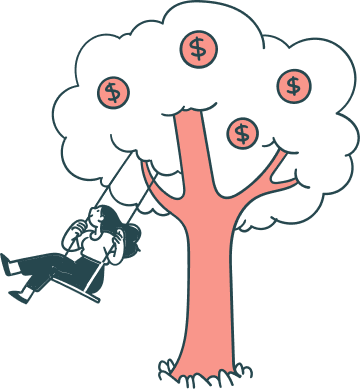Picking the right crowdfunding platform sets the groundwork for your campaign. When you create a fundraising page on a platform, that’s where you’ll direct donors to learn more about your project and potentially make a donation. Therefore, your fundraising page should capture your supporters’ attention and have all the necessary elements so that you can make the most out of your campaign.
With so many different platforms out there, it’s hard to know which one to choose. How do you know what platform has everything you need to make your campaign shine?
Don’t worry; we’ve got you covered! We’ve created a list of questions that can help narrow down your list of platforms. That way, you can pick the one that’s right for your needs.
The five questions we’ll cover are:
- What is your fundraising idea?
- What features do you need?
- Can you customize your crowdfunding page?
- How much will the platform cost?
- Does the platform come with a way to track your progress?
- Bonus! Our Top Picks for Crowdfunding Platforms
Looking for more advice on crowdfunding? Check out this helpful resource!
Question #1: What is your Fundraising Idea?
The type of project you pick can affect what audience you target and what kind of crowdfunding platform you decide to use. Some crowdfunding platforms are suited for a wide variety of projects, while other sites cater to specific niches. You want to pick a platform that best fits your fundraising idea so that potential donors can easily find you.
Pay attention to the kind of projects that people create on each site. Not all crowdfunding platforms are going to be suitable for your project. If you’re not sure, compare a couple of sites and identify what makes them different and what kind of projects they support.
Additionally, different platforms follow different models. For example, we’ll take a look at four categories that crowdfunding platforms fall into:
Items Model
In the items model, nonprofits sell merchandise in order to raise money. In most cases, the nonprofit is allowed to customize their items, choosing various color options and the design. The crowdfunding platform will deduct the costs to print and make your items, and your organization receives the profit.
There are a number of things your organization can sell, such as:
- T-shirts.
- Hats.
- Water bottles.
- Mugs.
- And much more!
Ideally, your organization should work with a fundraising website like Bonfire, that will print and ship your items directly to supporters. This way, your organization can focus on promoting your page.
Donation Model
When you think of crowdfunding, it’s most likely the donation model that comes to mind. In this model, nonprofits will create a project without incentives and ask for donations from supporters. Fundly is an example of a platform that follows this donation model.
Generally, donation model crowdfunding campaigns gain interest through captivating social media marketing strategies. Donors are able to give as little or as much as they want in order to help your nonprofit reach its goal.
Organizations generally use this type of campaign for disaster relief because they can set up a fundraising page quickly and start receiving donations right away.
Rewards Model
Some crowdfunding platforms require you to give donors rewards based on their donation. A great example of this type of platform is Kickstarter.
While Kickstarter isn’t geared toward philanthropic causes, anyone that starts a campaign on their platform will have to include perks for their supporters. The incentives can be anything the campaign creator wishes. For example, you could offer t-shirts, coffee mugs, a personalized thank you, and much more. Really, the possibilities are only limited by your creativity.
Having to include incentives does mean more effort on the crowdfunders part, but the draw of an awesome gift can be a great motivator for people to contribute.
Peer-to-Peer Lending Model
A loan may not be your first thought when it comes to crowdfunding, but this unique model can incentivize more people to give to an urgent cause since they know they’ll be paid back. Platforms like PeerFinance101 allow people to raise money through loans.
It’s a win-win situation because the campaign creator is able to receive the funds they need and the supports know that they’ll get their funds back.
Before you pick the right model for your nonprofit, you should consider your target audience. If you’re trying to motivate more first-time donors to participate, the reward model might be a good platform to use because it offers donors an incentive to give.
Once you’ve figured out the direction for your crowdfunding campaign, you can start figuring out what platforms align with your idea.
The bottom line: Understanding your fundraising project will help you determine what type of crowdfunding site you want. This process can narrow down your options to help you pick the perfect one.
Question #2: What Features do you Need?
Each crowdfunding platform is unique because of the features it offers. And features should play a huge part when deciding what platform to use. Your nonprofit should pick a platform that makes it easy to create a fundraising page.
While the general principles of crowdfunding aren’t going to change much from platform to platform, the features are certainly going to vary. And with each feature comes a different opportunity for you to make the most of your campaign.
For example, crowdfunders who select Fundly get such features as fully customizable pages, top-notch integrations, and easy-to-use management tools. And those who use Kickstarter get the benefit of tracking tools, possible placement on their feature page, and FAQ sections for donors.
The more platform research you do, the more you’ll start to understand what features truly define each crowdfunding website.
If you’re not sure what features you need yet, that’s okay! We’ll cover four examples of what you should look for in your search:
- Software integration: Whichever crowdfunding platform you choose, you should be able to integrate with your CRM and payment processing software. That way, you can track your fundraising methods and have a secure way to process payments.
- Shareability: Social sharing is the core of crowdfunding. Without it, supporters won’t know that your campaign exists. Choose a software provider that allows donors to share donations with their peers. Also, include social sharing buttons on your fundraising page.
- Mobile-responsive fundraising pages: Having a mobile-responsive page makes sure that every donor has as similar viewing experience no matter what device they’re using. Your supporters will be able to give on the go when you have a fundraising page that’s easy to use on mobile phones.
- Management: It’s better to have a system that automatically handles some tasks, such as sending out receipts and updating your goal tracker. When these things are handled, you can focus on other tasks like promoting your campaign.
In addition to the features above, create a list of things you want from a crowdfunding platform. You also want to consider the different ways each platform accepts online donations.
Once you have your list, cross out the platforms that don’t make the cut.
The bottom line: Features are what make a crowdfunding platform unique and easy to use. Pick the platform that has the features you need so that you can maximize your fundraising potential.
Question #3: Can you Customize your Crowdfunding Page?
Your nonprofit needs the flexibility to create a page that conveys your project and matches your brand. The level of customization varies from one platform to the next, but you should always choose a platform that allows you to personalize your fundraising page.
If you pick a site that doesn’t have much customization, your page will blend in with the rest of the fundraising campaigns, making it harder for you to grab your supporters’ attention.
Organizations should look for platforms that give them the ability to:
- Include a logo and change the color scheme. Having a branded page will make it more recognizable and establish trust among your donors. Donors will be more comfortable about giving to a branded page because they can feel confident about who is receiving their funds. In fact, according to an online giving study, branded fundraising pages raise 14% more funds than unbranded pages.
- Add giving levels and incentives. With giving levels, donors are able to see how their funds will be used. For instance, if your nonprofit was providing supplies to students in need, you might create a giving level for $15 that provides one student with a backpack. Alternatively, nonprofits can offer incentives like branded merchandise to motivate donors to contribute.
- Post updates to your crowdfunding page. Sharing updates is about more than just keeping donors in the loop; it also helps spread the word about your campaign and show donors how far you’ve come. A donor might feel more inclined to give your organization if they see that you’re close to reaching your goal.
Moreover, customization is about more than just displaying your brand. You should pick a crowdfunding platform that allows you to post videos and images so that you can tell your story. Video stories help you raise more funds because they convey your message in a quick and engaging way.
In fact, crowdfunding campaigns with video raise four times as more than those without them. Don’t miss out on these funds by choosing a platform will little customization.
With a platform that can be fully customized, you’ll be able to create a unique experience for your supporters that leaves a lasting impression. Just look at how these campaigns used their platforms to create a twist on the traditional experience!
The bottom line: Customization should be a factor you consider when picking a campaign because it can potentially increase your funds. Look for a platform that lets you brand your page and add media.
Question #4: How Much Will the Platform Cost?
Each crowding funding platform is going to have a different payment structure. It’s up to your nonprofit to figure out which platform makes the most sense for your budget.
Usually, the cost to create a crowdfunding campaign is divided into two categories (1) the setup cost and (2) the payment processing fee.
For instance, some platforms take a set fee or a percentage of what you raise as the setup cost. In other words, your nonprofit pays a fee to host a campaign on their site.
Additionally, most platforms have a processing fee that varies from platform to platform. This fee goes to the payment processor. Usually, it’s a percentage of the entire amount you raise plus a fee for each transaction.
What should you take into consideration when you factor in the cost of platforms? Let’s take a look:
- How much do you want to raise? Your fundraising goal can play a big part in what platform you choose. If you intend to have a very high fundraising goal, you might want to go with a platform that has a smaller processing fee.
- How big is your nonprofit? If you have a smaller nonprofit with fewer resources and a smaller budget, you might want to go with a platform that doesn’t have a setup fee.
- What features does the platform offer? Your nonprofit may be satisfied paying a higher cost if the platform comes with all the features you need.
Those three questions will help you decide what you want to pay for your crowdfunding software. Instead of picking the least expensive option, be sure to compare the advantages and disadvantages of each platform. That way, you can find the one that gives your nonprofit all the resources you need to host a successful crowdfunding campaign.
The bottom line: Cost is just another consideration your nonprofit will have to factor into your decision. The price can influence how high you set your goals and what features you get, so choose wisely.
Question #5: Does the Platform Come With any Support?
While you’ve created a lot of fundraising campaigns in the past, this might be your first crowdfunding campaign. If that’s the case, you might want to use a software provider that offers you some assistance.
Depending on the crowdfunding platform, you might receive fundraising support, technical aid, or a combination of both.
Some crowdfunding platforms offer fundraising packages (at an additional cost) to help you create a strategy and market to your supporters.
For instance, Fundly offers crowdfunding packages that can help you establish realistic goals and help you gain deeper insights into your target audience.
Of course, those are all optional features you can take advantage of to prepare further for your campaign.
In addition to fundraising support, most crowdfunding platforms offer technical help.
Having a good technical team is crucial because they can help you fix problems with your fundraising page. And, when you have problems solved quickly, your nonprofit can focus on more important things like marketing your campaign, following up with donors, and analyzing the results.
The bottom line: Having a good support system can come in handy. It can help you improve your campaign so that you can raise even more funds.
BONUS: Our Top Picks for Crowdfunding Platforms
Now that you’ve got the answers to the top 5 crowdfunding questions, you’re probably looking for an amazing crowdfunding platform.
Well, we’ve got the best platforms for nonprofits that are looking to raise money for any cause, project, or event.
And for a complete list of the top crowdfunding platforms, check out this article!
A. FundlyPro
FundlyPro is the nonprofit version of Fundly’s standard crowdfunding platform for individuals. FundlyPro enables nonprofits to easily reach out to their supporters and their networks with deep social integrations and communication options.
Standard FundlyPro features include:
- Photo and video uploads.
- Facebook and Twitter integrations.
- Mobile fundraising.
- Facebook donation pages.
- No fundraising minimums.
- No penalties for not reaching a goal.
- Low payment processing fees.
- And more!
For an additional fee, you can start a VIP campaign. This package gives you all of the standard FundlyPro features, as well as:
- Onboarding webinars.
- Goal-setting analysis.
- Marketing and fundraising strategy.
- Phone and email support.
- And more!
Watch this video to learn more about how you can raise money with Fundly.
B. SalsaLabs
SalsaLabs is known for their CRM, advocacy, and fundraising software, but they also have a P2P/crowdfunding platform for nonprofits!
According to their website, “Salsa’s peer-to-peer tools help nonprofits turns walks, thons, golf outings and more into dynamic, multi-channel grassroots fundraising campaigns. It can also jumpstart and support DIY fundraising.”
Features of Salsa’s P2P/crowdfunding software include:
- Event pages.
- Team and individual fundraising pages.
- P2P coaching.
- A free mobile app for fundraisers.
- Email marketing.
- And more!
Visit the SalsaLabs website to learn more about their peer-to-peer fundraising solutions.
Your nonprofit should ask these five questions before making the final decision on what crowdfunding platform to use.
These questions will help you narrow down the long list of platforms available so that you can find the best solution for your nonprofit. Good luck searching!
For more information on crowdfunding and online fundraising, read these additional resources:
- GoFundMe Alternatives. You’ve probably heard of the crowdfunding website GoFundMe, and while the platform is a popular option, there are plenty of other (sometimes better suited) crowdfunding sites. Check out 5 alternatives that can help you raise money.
- Mobile Crowdfunding Campaign Tips. Crowdfunding and mobile donations go great together because you can raise money quickly with convenient mobile giving options. Learn more mobile crowdfunding tips with this article.
- Online Donation Platforms. Learn more about online donation platforms to help boost your campaign’s fundraising potential.












